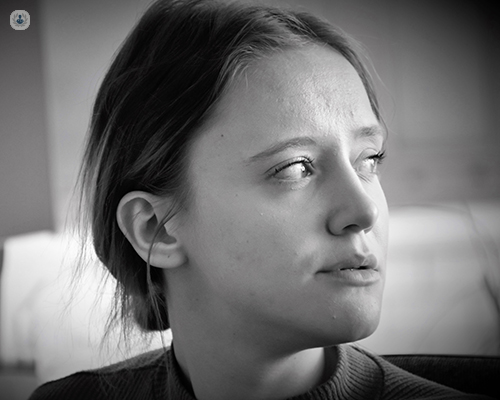Spotting the warning signs of potentially precancerous malignant oral lesions
Written in association with:Oral potentially malignant disorders (OPMDs) are a group of conditions associated with an increased risk of developing oral cancer. These changes can appear on the tongue, inside the cheeks, on the roof or floor of the mouth, or on the lips. Patients diagnosed with OPMDs have an increased susceptibility to develop oral cavity cancer during their lifetime, therefore, the presence of such lesions should be taken seriously.
We speak to leading oral medicine specialist Dr Barbara Carey, who explains the warning signs of oral potentially malignant disorders / lesions.

What do these lesions look like?
Oral potentially malignant disorders can appear in several forms, differing from person to person. The changes in the oral cavity may or may not cause discomfort, and may be overlooked. Examples include leukoplakia, erythroplakia, oral lichen planus and lichenoid lesions. Leukoplakia refers to white patches or spots that cannot be scraped off and have no clear cause. Erythroplakia, on the other hand, presents as fiery red patches. Some lesions may appear as a mixture of white and red, known as erythroleukoplakia. Oral lichen planus is characterised by the presence of white reticular lesions and/or erosive and/or atrophic lesions. Oral lichenoid lesions often have an underlying causative agent such as a dental restoration or drugs.
Who is at risk of developing these lesions?
Certain factors increase the likelihood of developing oral potentially malignant disorders. Tobacco use, whether through smoking or chewing, is one of the leading risk factors. Alcohol consumption, particularly when combined with tobacco, further heightens the risk. Other contributors include prolonged exposure to ultraviolet (UV) light (especially for lip lesions), betel quid chewing, and poor nutritional status . Moreover, immunosuppression (e.g. HIV/AIDS, post-organ transplantation), personal or family history of cancer and selected syndromes (e.g. dyskeratosis congenita, Fanconi anaemia), may be considered risk factors. [5, 17, 18]. Human papillomavirus (HPV) has also been elucidated as a possible contributory factor in the development of oral leukoplakia.
Should you be concerned about these lesions?
While not all oral lesions are dangerous, any persistent changes in your mouth should be evaluated by a doctor or dentist. These lesions may not cause symptoms, so regular dental check-ups are essential. Early detection can make a significant difference, as treatment is often more effective before the lesions progress.
How are these lesions diagnosed?
Diagnosis typically involves a thorough examination of your mouth by a dentist or doctor. If they notice any suspicious areas, they may recommend a biopsy, which involves taking a small tissue sample for analysis under a microscope. Biopsy is the gold standard method for the diagnosis of many lesions and diseases including the investigation of oral cancer or potentially malignant disorders.
What can you do to reduce your risk?
Preventing oral potentially malignant disorders involves lifestyle changes and regular self-care. Avoiding tobacco and limiting alcohol consumption are two critical steps. Protect your lips from UV exposure by using water resistant lip balm with broad-spectrum UVA and UVB protection (SPF30+). Maintaining good oral hygiene and a healthy diet are also important. Importantly, seeing your dentist regularly allows for early detection of any concerning changes.
If you notice unusual changes in your mouth, such as persistent red or white patches, non-healing ulcers, or swelling, do not ignore them. Prompt evaluation can make all the difference in protecting your oral health.
If you would like to book a consultation with Dr Carey, do not hesitate to do so by visiting her Top Doctors profile today.


